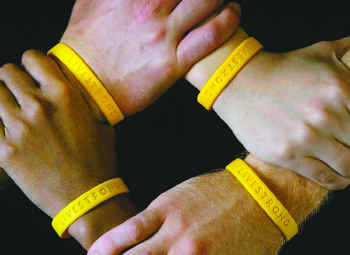WEST LONG BRANCH, N.J. – When it was originally announced that Peter Jackson was turning his adaptation of The Hobbit into three films, a bit of skepticism washed over many fans. A common reaction was that the filmmakers ‘would not have enough material to fill three entire movies.’ Or, as it outwardly appeared, the adaptations could just be cash grabs. Thankfully, the first installment, An Unexpected Journey, turned out to be a satisfying return to Middle-Earth, with a great sense of adventure (even if there were some pacing issues here and there). The Desolation of Smaug, while still suffering from similar pacing problems, is a much more action-packed experience, and is a solid middle chapter to the prequel trilogy.
The film picks up almost immediately where the first one left off. After a brief flashback, the company of dwarves led by Thorin Oakenshield (Richard Armitage) continue in their quest to reach the city of Erebor to defeat the dragon, Smaug, and reclaim their homeland. Bilbo Baggins (Martin Freeman), the hobbit of which the series is named after, is once again along for the ride (with the wizard, Gandalf (Ian McKellan)).
Bilbo is a bit more prominent in this film than he was in the last one, although he still takes a bit of a backseat to the dwarves in certain spots, especially Thorin. In fact, this movie, more than the last one, feels as though this is Thorin’s story rather than Bilbo’s. Freeman’s performance is still fantastic, however, capturing the spirit of the original character while adding his own unique take. Gandalf, on the other hand, is featured slightly less in this one, which is explained in the film’s plot. Seeing these characters again is a welcoming site, and they are just as endearing and fun to watch as they were in the first movie.

One of the weaker new characters, Bard, has a much bigger role than in the book, and comes off as a jerk for no real reason. The character that stole the show, though, was the dragon, Smaug. Voiced by Sherlock star Benedict Cumberbatch, his voice work gives the already fierce dragon an even more menacing personality, and the final climax with him makes for some of the best action sequences in the movie. His interactions with Bilbo are also great, and are sure to create plenty of Sherlock related jokes (Martin Freeman plays Watson on the show).

As mentioned earlier, Desolation of Smaug has a lot more action than its predecessor, making for a more thrilling journey. These action scenes also go for much longer than in An Unexpected Journey, resulting in slightly less downtime.

Where An Unexpected Journey stuck fairly close to the original story, with only a few new scenes thrown in here and there, this one contains even more original content, with the majority of the film consisting of sections that were not in the original story.
Some of these scenes actually succeed in enhancing the story (such as the battle during the escape in the barrels and the scenes with Smaug), although others feel as though they were included just to extend the running time, and could have been removed entirely. The most egregious of these scenes are the ones depicting the “romance” with Tauriel and the dwarf Kili (Aidan Turner), which go on for far too long and make the viewer wonder if they are watching the Extended Edition. Despite this, most of the additional scenes are fairly entertaining, and almost make up for the fact that Jackson stretched the film out as much as possible to justify a third one.
Dan Gunderman, The Verge’s Editor-in-Chief and film critic for TheCriticalCritics.com, said, “Jackson’s second adaptation of Tolkien’s Hobbit had me engaged throughout. Although my extremities may have fallen asleep after sitting in the theater for so long, I think that the film develops new characters, and characters of old, very nicely.”
All in all, The Desolation of Smaug may not be as strong a middle chapter as other film trilogies, like The Empire Strikes Back or The Dark Knight, yet is still a good excuse to return to the world that was so brilliantly captured in The Lord of the Rings. Most viewers’ enjoyment will derive from how attached they are to the source material. Viewers that are experiencing this story for the first time will probably get the most enjoyment out of the action-heavy scenes, but will find the filler sections slightly less tolerable.
If you’re already invested the series, The Desolation of Smaug will most likely keep you entertained throughout, with its depiction of the beloved tale. Just be prepared for terrible cliffhanger ending.




